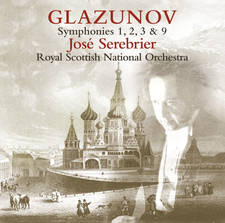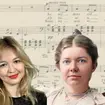Meet the friends of Elgar who inspired the Enigma Variations
Jane Jones reveals the inspirations behind a piece that was the turning point for Elgar and English music.
‘I have sketched a set of variations on an original theme: the Variations have amused me because I’ve labelled them with the nicknames of my particular friends’. So wrote Elgar in a letter to his publisher Jaeger, known as Nimrod in the set of Variations.
Elgar goes on to explain that each characterisation is meant to represent the mood of the person themselves, with Elgar’s assertion that ‘I have written what I think they would have written – if they were asses enough to compose – it’s a quaint idea and the result is amusing to those behind the scenes…’ In fact, Elgar’s most popular orchestral composition has amused his fans and classical music lovers for more than a century since the hugely successful premiere under the baton of the German conductor Hans Richter on 19 June 1899. It was a turning point for Elgar.
When he was doodling at the piano that fateful evening in 1898, the success of his little improvisations must have seemed merely a dream to the composer. He had turned 40 and - despite his long apprenticeship, hopes and aspirations - the idea of making a decent living from his compositions seemed unlikely if not unattainable. He was making money from long hours of teaching, editing and writing for his publisher, and although he was receiving commissions, Elgar became quickly depressed when his work was criticised or ill-received. He’d complained that he was ‘sick of music’ which earned him so little for his efforts; he had received just 15 shillings for his cantata Caractacus. Such was the mood in the Elgar house that day, but when Alice heard the tunes her husband crafted on the piano, she liked them and encouraged him by declaring that in his variations, Elgar was doing ‘something which had never been done before’.
For his part, the composer was not content to simply match melodies to names, and described his new work as ‘commenced in a spirit of humour and continued in deep seriousness’. It was his intention all along to set a musical puzzle, a mystery, which would keep everyone guessing. In fact, as the title suggests, the mystery can both found in both elements of his Variations and Theme. For the first mystery – the identity of each of the friends ‘pictured within’ - there are plenty of clues, not least in the initials Elgar attaches to most of the Variations. But when asked directly for the meaning of the ‘Enigma’ the word itself written on the opening page of his manuscript, Elgar was far more elusive! His quote is often repeated: ‘The enigma I will not explain - its ‘dark saying’ must be left unguessed, and I warn you that the apparent connection between the Variations and the Theme is often of the slightest texture; further, through and over the whole set another and larger theme ‘goes,’ but is not played - so the principal Theme never appears…’
This added layer of mystery about his music didn’t do Elgar any favours! The critics at the London premiere were irritated and mystified by Elgar’s rather unhelpful answers to their questions, and his insistence on remaining secretive. As for the friends given a cameo by England’s great composer, the idea of an Enigma only added to the curiosity about the subjects of Elgar’s musical portraits. A lovely story followed the premiere, when one of Elgar’s friends approached another saying ‘I’m a Variation, are you?’ to which came the reply ‘No, I’m not a variation. I’m the theme!’
Together, Theme and Variations quickly cemented Elgar’s reputation, with performances in Little Brighton, near Liverpool and the Worcester Festival – conducted by Elgar himself. From the turn of the century, the Enigma Variations as they became known were heard from Manchester to Moscow, with the result that the Englishman was now internationally known and regarded. As for the ‘Enigma’ - the debate continues, with cogently argued cases for each suggestion – from Auld Lang Syne to Bach’s Art of Fugue. But Elgar himself remained forever silent.
The Variations: In Elgar’s Own Words
When it comes to revealing the friendships which inspired Elgar, we’re lucky to have both the composer’s notes and his correspondence to consider so we can discover more about his circle of close friends, fellow musicians and family:
Variation I (C.A.E.)—This is Alice Elgar, whose death in 1920 brought the composer’s creative life to a halt for twelve years until he began work on his Third Symphony toward the end of 1932. “The variation is really a prolongation of the theme with what I wished to be romantic and delicate additions; those who knew C.A.E. will understand this reference to one whose life was a romantic and delicate inspiration.”
Variation II (H.D.S-P.)—Hew David Steuart-Powell was a pianist with whom Elgar, a violinist, played chamber music. Their usual cellist was Basil Nevinson (Variation XII). This is the first of the Variations played to Alice, which she liked so much, and which led onto the other themes around the trio of musical friends.
Variation III (R.B.T.)—“Has reference to [Richard Baxter Townshend’s] presentation of an old man in some amateur theatricals—the low voice flying off occasionally into ‘soprano’ timbre.” Townshend was a classicist at Oxford and rode through that town on his bicycle, the bell constantly ringing. The violins’ plucked strings and their woodwind doublings represent the bicycle bell.
Variation IV (W.M.B.)—William Meath Baker, “a country squire, gentleman and scholar. In the days of horses and carriages it was more difficult than in these days of petrol to arrange the carriages for the day to suit a large number of guests. This Variation was written after the host had, with a slip of paper in his hand, forcibly read out the arrangements for the day and hurriedly left the music-room with an inadvertent bang of the door.”
Variation V (R.P.A.)—Richard Penrose Arnold, son of the literary critic and poet Matthew Arnold, was “a great lover of music which he played (on the piano) in a self-taught manner, evading difficulties but suggesting in a mysterious way the real feeling. His serious conversation was continually broken up by whimsical and witty remarks.” Strings, in one of Elgar’s most expansive and inspired melodies, represent Arnold’s nobility of mind and his deeply truthful way of playing music.
Variation VI (Ysobel)—This is Isabel Fitton, a woman, in critic Michael Kennedy’s words, of “grave, statuesque beauty.” She was an amateur violinist who, to make up for a shortage of local violists switched to the deeper instrument. The music conjoins formality and gravity with discreet romantic allure.
Variation VII (Troyte)—Arthur Troyte Griffith, an architect, was one of Elgar’s most intimate friends. “The uncouth rhythm of the drums and lower strings was really suggested by some maladroit essays to play the pianoforte; later the strong rhythm suggests the attempts of the instructor (E.E.) to make something like order out of chaos, and the final despairing ‘slam’ records that the effort proved to be in vain.”
Variation VIII (W.N.)—This variation, named for Winifred Norbury, is less a portrait of Miss Norbury than of Sherridge, the eighteenth-century house where she lived with her sister Florence. “The gracious personalities of the ladies are sedately shown.” As the variation draws to a close, Elgar offers the most beautiful harmonic stroke in the Enigma Variations. As the final G major chord dies away, only the first violins hold their note until the other strings, re-entering, with magical effect slip a chord of E-flat major under it.
Variation IX (Nimrod), the most loved of the variations. “Jaeger” is the German for “hunter,” and Nimrod is the “mighty hunter” mentioned in Genesis 10. August Jaeger was a German-born musician of frail health and great soul who worked for the London music publishing house of Novello and who, more than anyone except Alice Elgar, sustained the composer through his frequent and severe periods of depression. “The Variation . . . is the record of a long summer evening talk, when my friend discoursed eloquently on the slow movements of Beethoven, and said that no one could approach Beethoven at his best in this field, a view with which I cordially concurred.” Jaeger, still young, died in 1909, and nearly twenty years later Elgar wrote: “His place has been occupied but never filled.”
Variation X (Dorabella—Intermezzo)—Dora Penny, stepniece of Variation IV (Billy Baker), cheerful and music-loving, was a woman to whom Elgar was very close. We hear a suggestion of the stammer with which she spoke in her youth. We also sense an extraordinarily potent though repressed sexuality, to say nothing of Elgar’s powerful and repressed response to it.
Variation XI (G.R.S.)—The initials belong to George Robertson Sinclair, organist of Hereford Cathedral, but the music belongs to Dr. Sinclair’s dog. In Elgar’s words, “The first few bars were suggested by [the] great bulldog Dan (a well-known character) falling down the steep bank into the River Wye (bar 1); his paddling up stream to find a landing place (bars 2 and 3); and his rejoicing bark on landing (second half of bar 5). G.R.S. said ‘set that to music.’ I did; here it is.”
Variation XII (B.G.N.)—“The Variation is a tribute to a very dear friend [Basil Nevinson] whose scientific and artistic attainments, and the wholehearted way they were put at the disposal of his friends, particularly endeared him to the writer.”
Variation XIII (***Romanza)—The asterisks in place of initials suggest further mystery, and the additional title of “Romanza” heightens the effect. Elgar explains that the asterisks take the place of the name of a lady who was, at the time of composition, on a sea voyage. The lady was Lady Mary Lygon. In the spring of 1899, she was on her way to Australia with her brother, who was to be installed as Governor of New South Wales. The music conveys a poignant sense of longing for someone far away.
Variation XIV (Finale: E.D.U.)—These are no one’s initials, but run them together and they give you Alice’s nickname for Edward. This variation/finale shows the composer’s boldly assertive, confident side—less than half of him, in other words. Alice returns, as does Nimrod, and the music ends in a blaze.
























